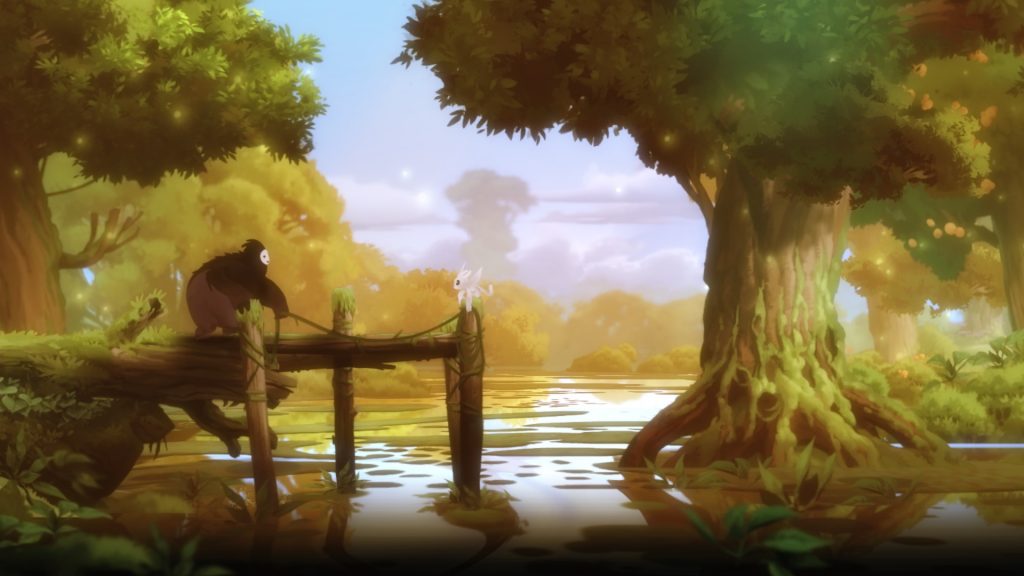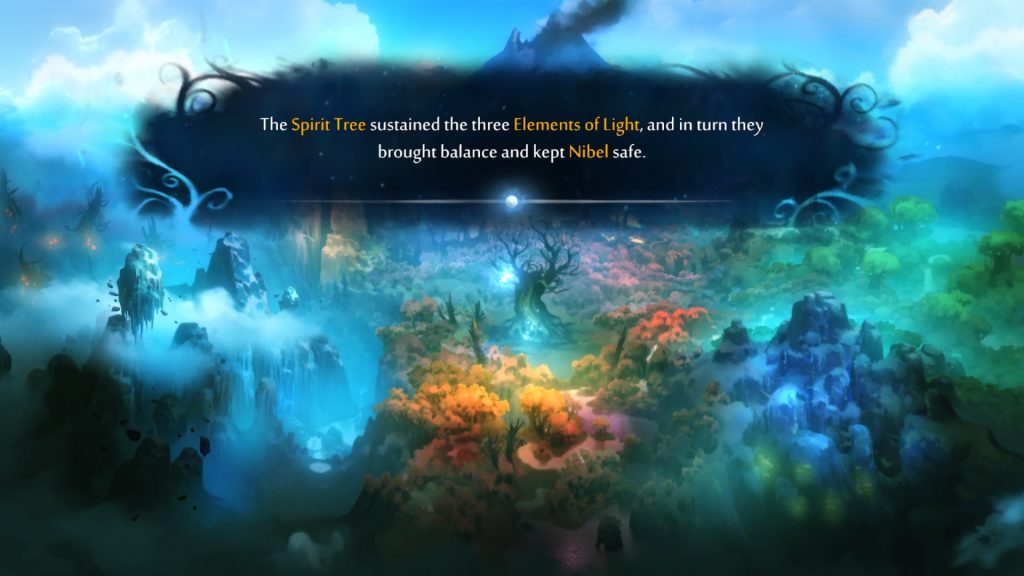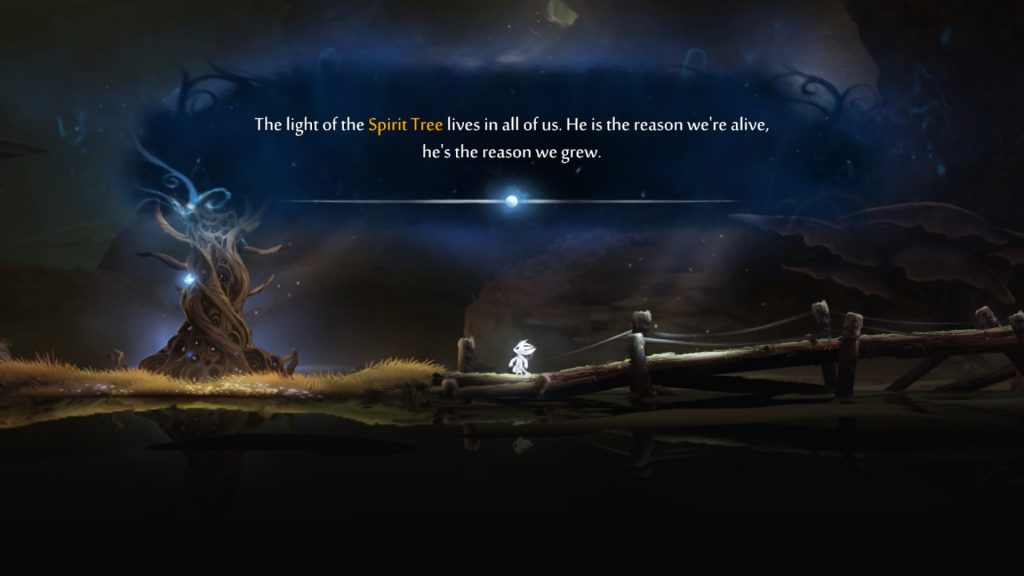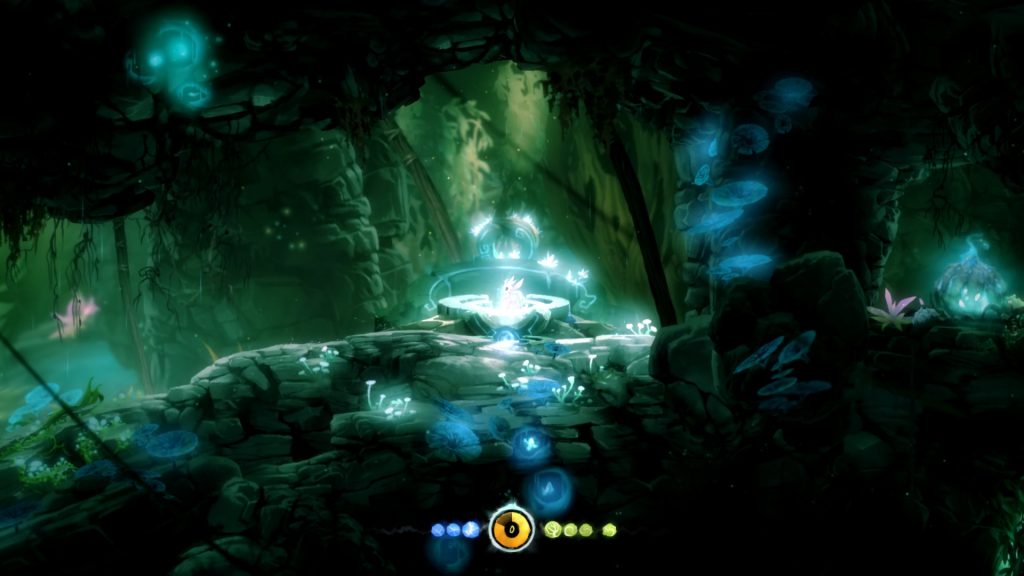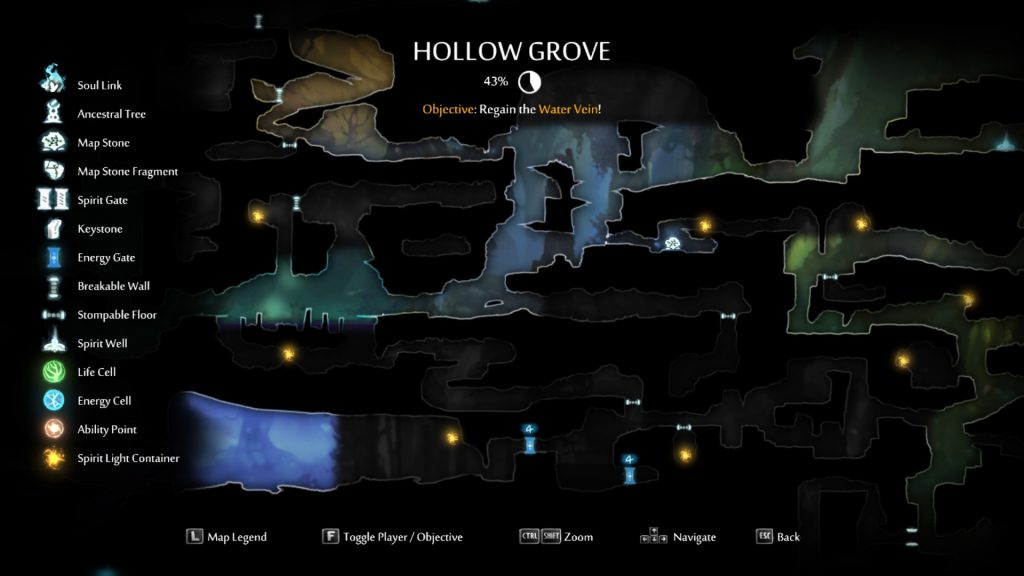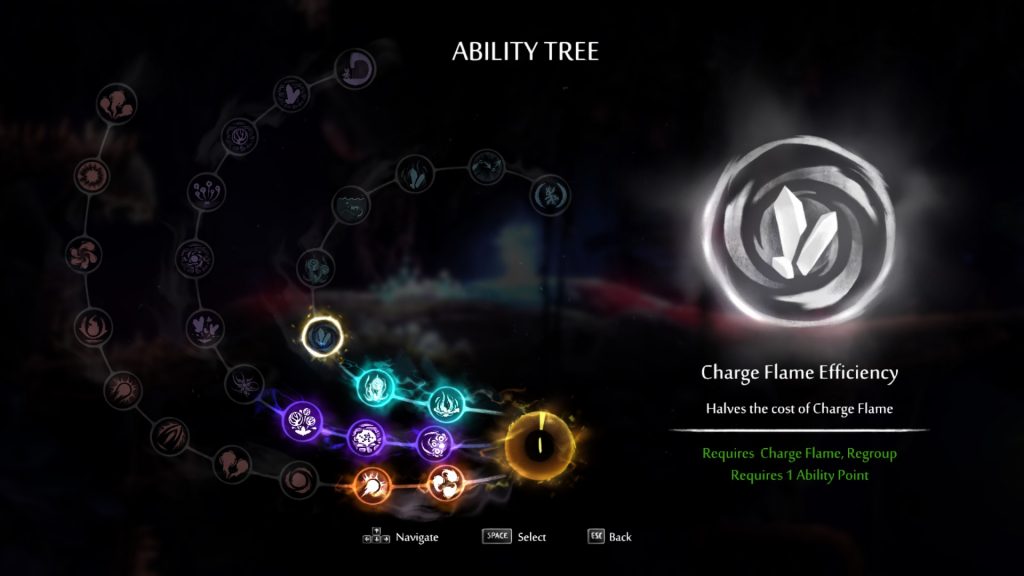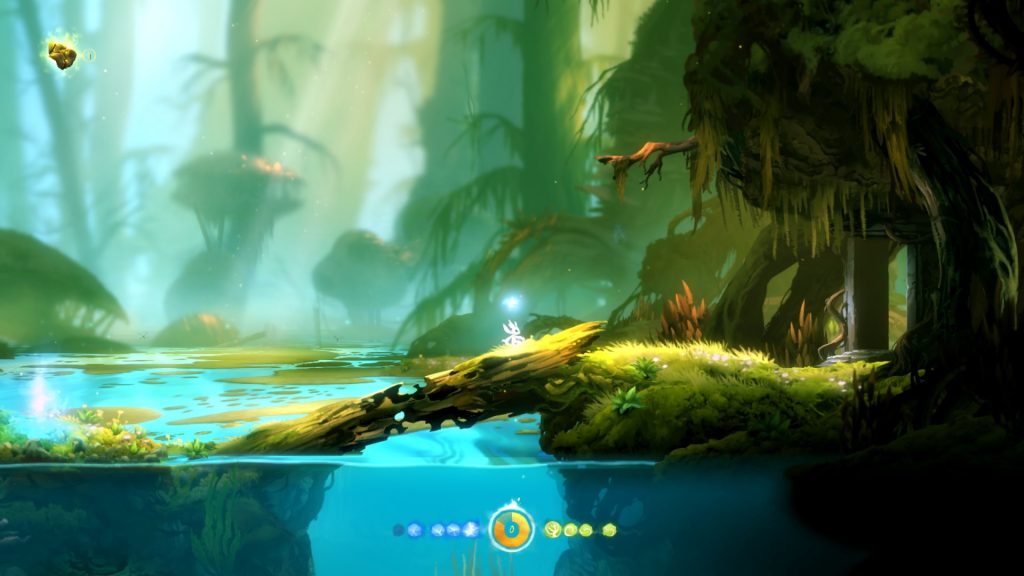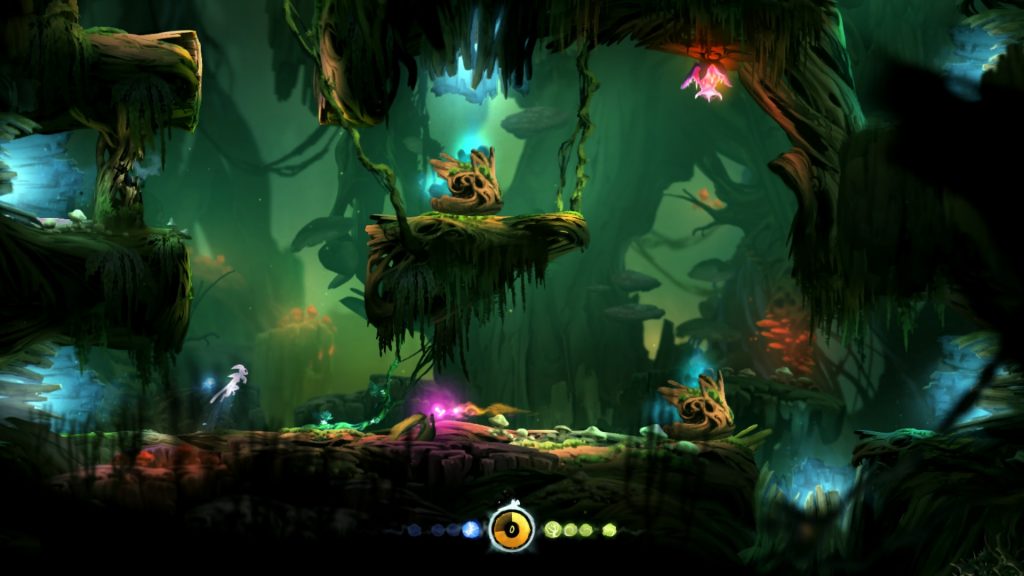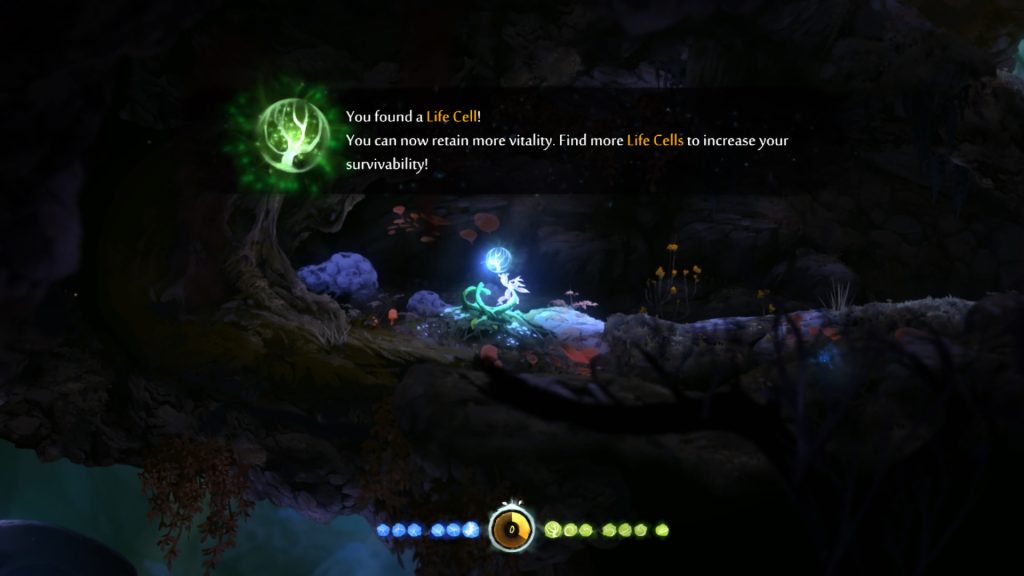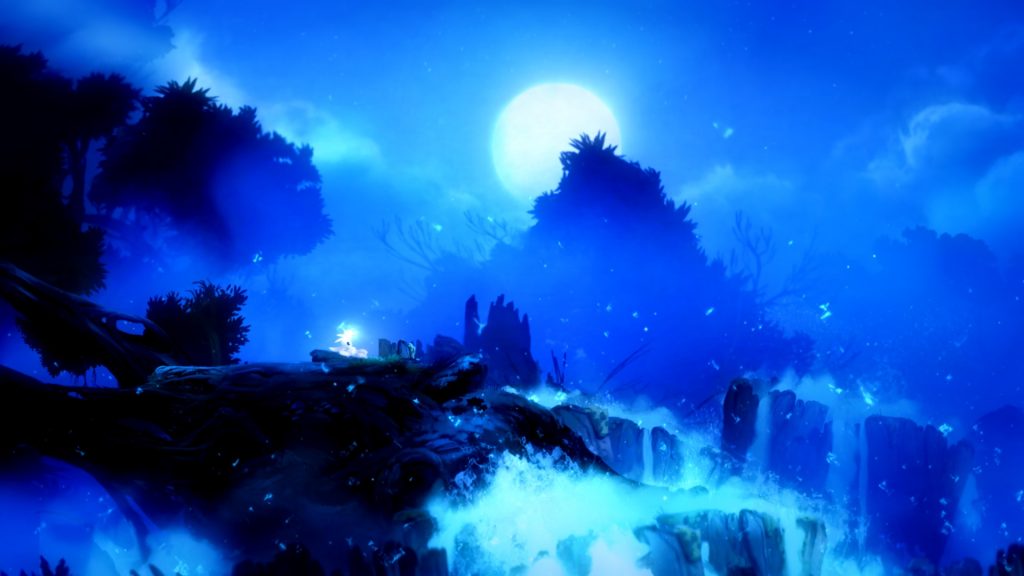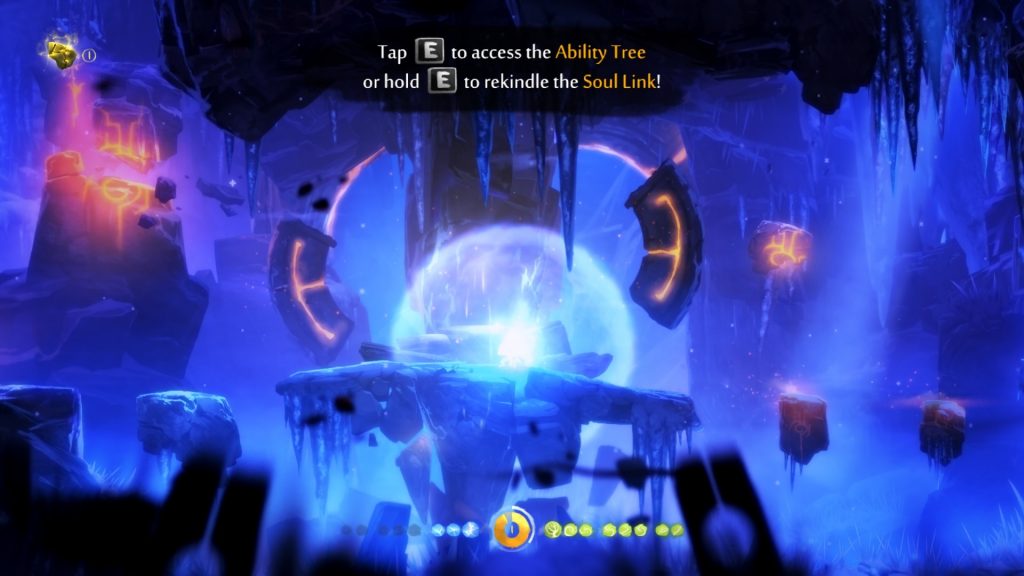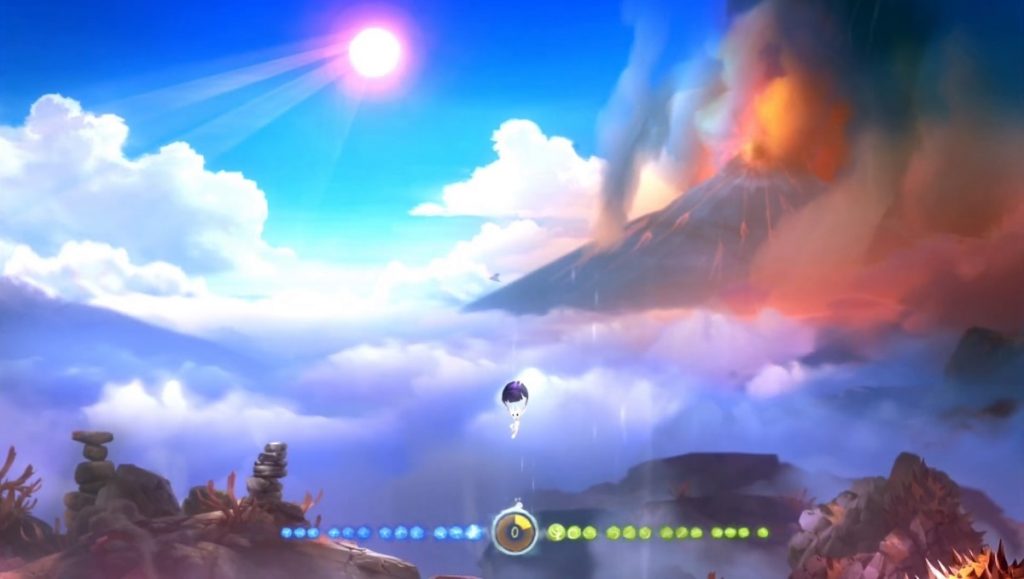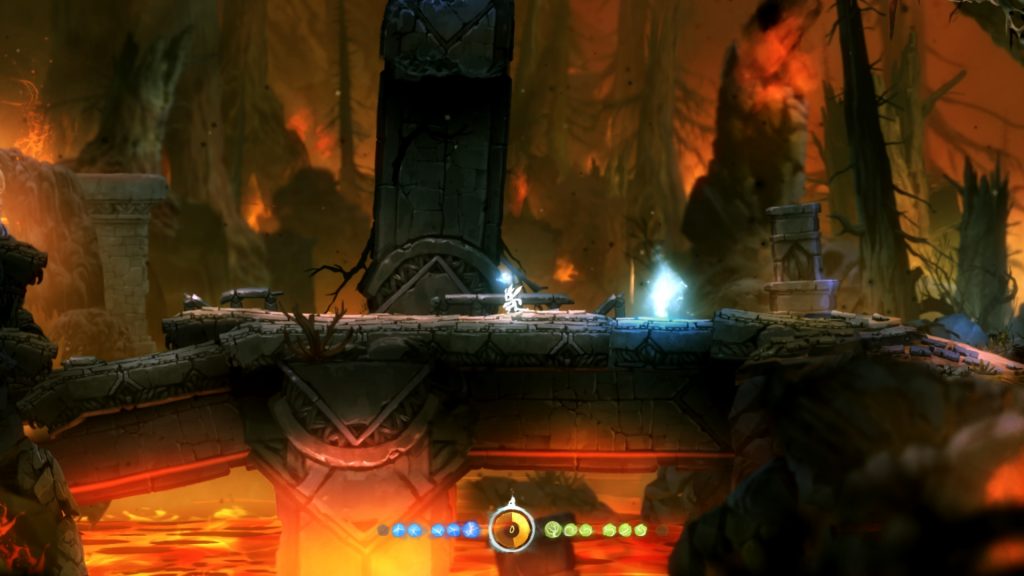Ori and the Blind Forest

Developer: Moon Studios GmbH
Publisher: Xbox Games Studios
Released on Mar 11, 2015
Ori and the Blind Forest is a game set in an ethereal fantasy world of spirits brought to life by beautiful paintings and flawless animation. No seriously, it’s high production values cannot be understated. It narrates the story of an orphaned spirit guardian destined to save the forest of Nibel from decaying into a barren wasteland. The spirit tree was attacked by a misguided creature of darkness and it’s up to Ori to restore the light.
Genre: Action-Adventure Platforming
A leaf from the Spirit Tree is carried away in a fierce storm. It lands in front of Naru who sees the glowing leaf birthed into a young spirit guardian named Ori. She embraces the helpless creature and becomes his surrogate mother, giving him a place to call home. Then the player watches a heartwarming cut scene of them building a bridge to pick the fruits on the other side.
It was a warm summer day that didn’t last long, for the spirit tree blazed with a blinding light, forcing the pair to retreat into the cave. Soon enough, the forest decays at an alarming rate and they eventually run out of food. Naru lets Ori have the last piece of fruit but tragically passes away from starvation. Ori nearly suffers the same fate until the spirit tree lends him the last of his strength.
The player can now control Ori as he travels through the Sunken Glades. There, he encounters a mysterious talking light known as Sein. She was forcibly ripped out of the spirit tree by their nemesis, Kuro, a giant owl of darkness. With Nibel thrown into chaos, Ori must go on a journey to retrieve the three elements–of water, wind, and warmth.
The world map above displays all the regions in the forest of Nibel. Sein acts like a guide, telling the player where to go next. (Navi, is that you?) There are at least six locations like the Moonlight Grotto or the Hollow Grove, each with its own unique, scenic environment. The whole prophecy is foretold in an abstract way so you don’t have to understand it to enjoy the game.
Since this is a 2-D platformer, players will have to rely on their reflexes to overcome most of the game’s challenges. The more spirit lights Ori absorbs, the stronger he gets, whether it’s from destroying enemies or gaining the powers of other fallen spirits. Ori can learn to double jump, charge the spirit flame, bash enemies, stomp the floor, climb up walls, and more.
Sometimes, you might run into a Spirit Well. This save point fully restores Ori’s health and will save your skin more times than you’d like to admit. Deadly projectiles are everywhere which is why it’s important to save often by creating a soul link in case Ori loses all his lives. Ori’s spirit flame only works on hostile creatures but has no effect on most obstacles.
You can pull up the map to see which areas you have not visited yet. The Blind Forest is a vast landscape with endless caves and hard to reach places. The map legend reveals the location of collectibles ranging from spirit light containers to keystones. At certain times, you will need to open spirit gates to progress further. If you can’t access an area it just means you don’t have enough skills yet.
But don’t worry, you’ll have another chance to collect those ability points on your way back. The map displays obstacles such as the breakable walls and energy gates to prevent you from advancing too far.
Speaking of skill trees, there are three approaches to making Ori stronger. You can raise his energy capacity, power up his charge flame, or heighten his senses so he will find rare life cells. Being well-rounded has its advantages, but I would advise maxing out the “utility” branch after you get at least three upgrades in each. Adding buffs to combat isn’t very helpful in the earlier stages.
To unlock spirit gates, you must collect all the shards lying around. It’s a lot harder than it looks when all the living creatures are openly hostile towards your little spirit guardian. Ori can’t withstand many hits before kicking the bucket so the trick is to create a soul link right after facing waves of tough enemies and rows of dangerous spikes.
You kinda learn to play by trial and error but the game does throw in a few puzzles at times: Inside the Ginso Tree, you have to solve a puzzle made up of laser-shooting flowers and movable blocks. You need to break the wall blocking a portal to the next area. But to do that, you have to position the blocks to reflect the lasers towards a number of interconnected portals.
The game gets progressively harder the closer you are to restoring an element of light. To have fewer near-death encounters, you’ll need to raise Ori’s maximum health using Life Cells. Energy Cells are crucial too! They allow Ori to increase his energy storage so he can create extra soul links to avoid sticky situations. Of course, these aren’t easy to find unless you leave no stone unturned.
And who could forget the Ginso Tree escape sequence? After you rekindle the element of waters, the hollowed-out tree begins to flood with rising water. It is a sudden difficulty spike for most players who reach this point because they had just learned how to bash enemy projectiles. It will take several tries to make it out alive since there are no save points during escape sequences (a total of 3 in this game).
I noticed that each stage introduces a new mechanic: Sometimes Ori has to carry a gemstone back to the start of the level, where a locked door is waiting to be opened. In the Forlorn Ruins, home of the Gumons lies the element of wind. It is here that you must hold onto a light vessel to safely traverse on the heated ledges and walls. This orb has gravity-changing properties to help you jump onto the sides of a platform.
The game no longer restricts your ability to travel once you rekindle the elements to restore the spirit tree’s power. Gliding is one of my favorite aspects; it lets Ori float over giant pits without accidentally falling into them. After all, you should always look before you leap. In Sorrow’s Pass, Ori is able to ascend by gliding on a feather where the wind blows upwards.
By now, you’d have plenty of health and energy to spare so dying hundreds of times is not as frustrating to deal with. That isn’t to say you should ignore all the optional collectibles or otherwise you’d have an uphill battle trying to survive in later stages. Luckily, most of the enemies are weak slimes, spiders, or jumping monkeys with rather predictable attacks.
Eventually, I did get to a stopping point on Mount Horu. While I’ve thought about going back to beat it, I did have a hard time navigating our little spirit guardian inside of a volcano that literally resembles Hell.–All the floors are made of lava and there is almost nothing safe to stand on; it forces you to constantly bash fireballs with few places to save your progress.
The takeaway from all this is that Ori and the Blind Forest is a challenging but rewarding game. While you’re welcome to turn down the difficulty for a more cinematic storytelling experience, I believe it’s better to play with all of the mechanics it has, so you can brag about finishing the game despite everything you had to face to get there.
